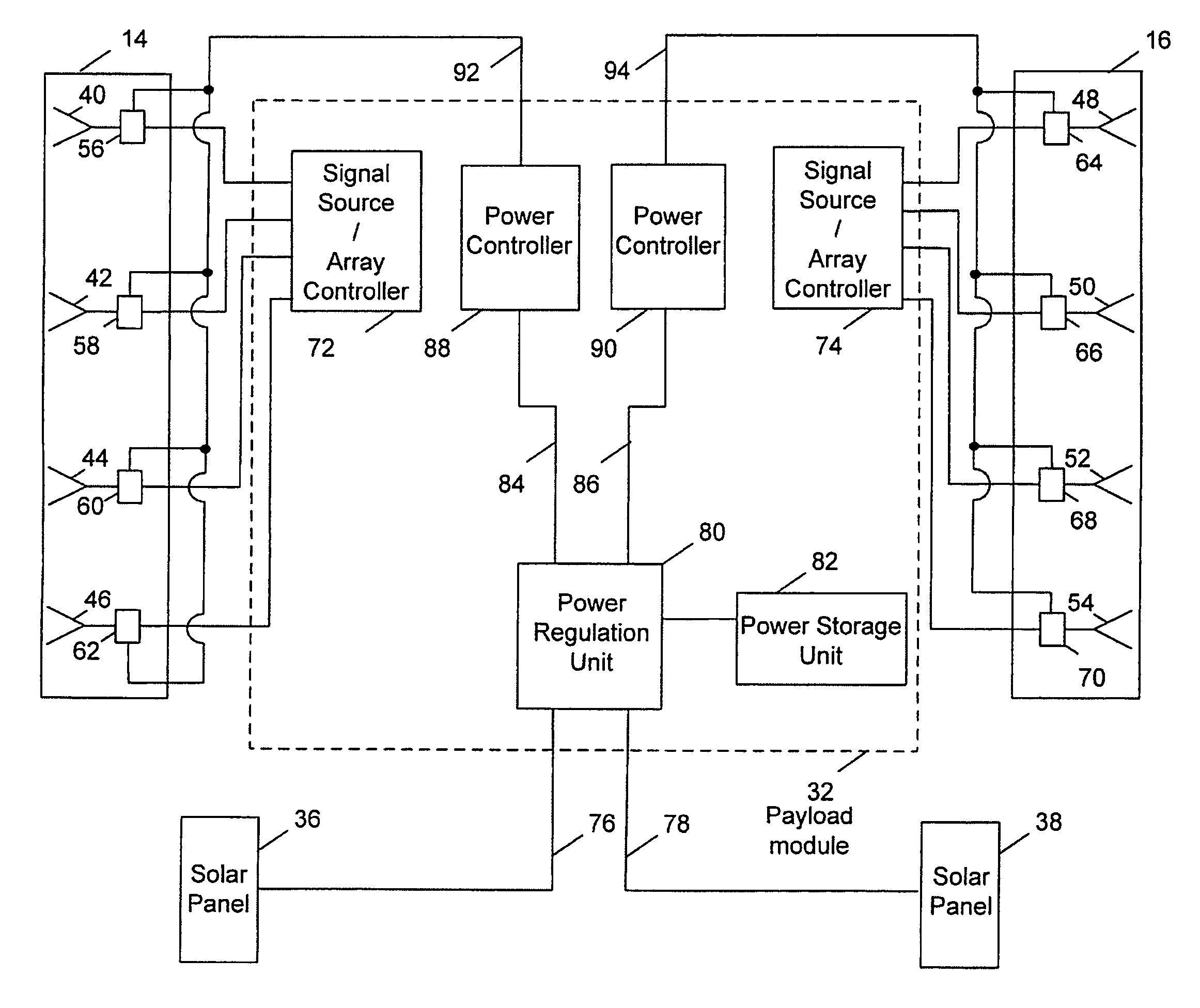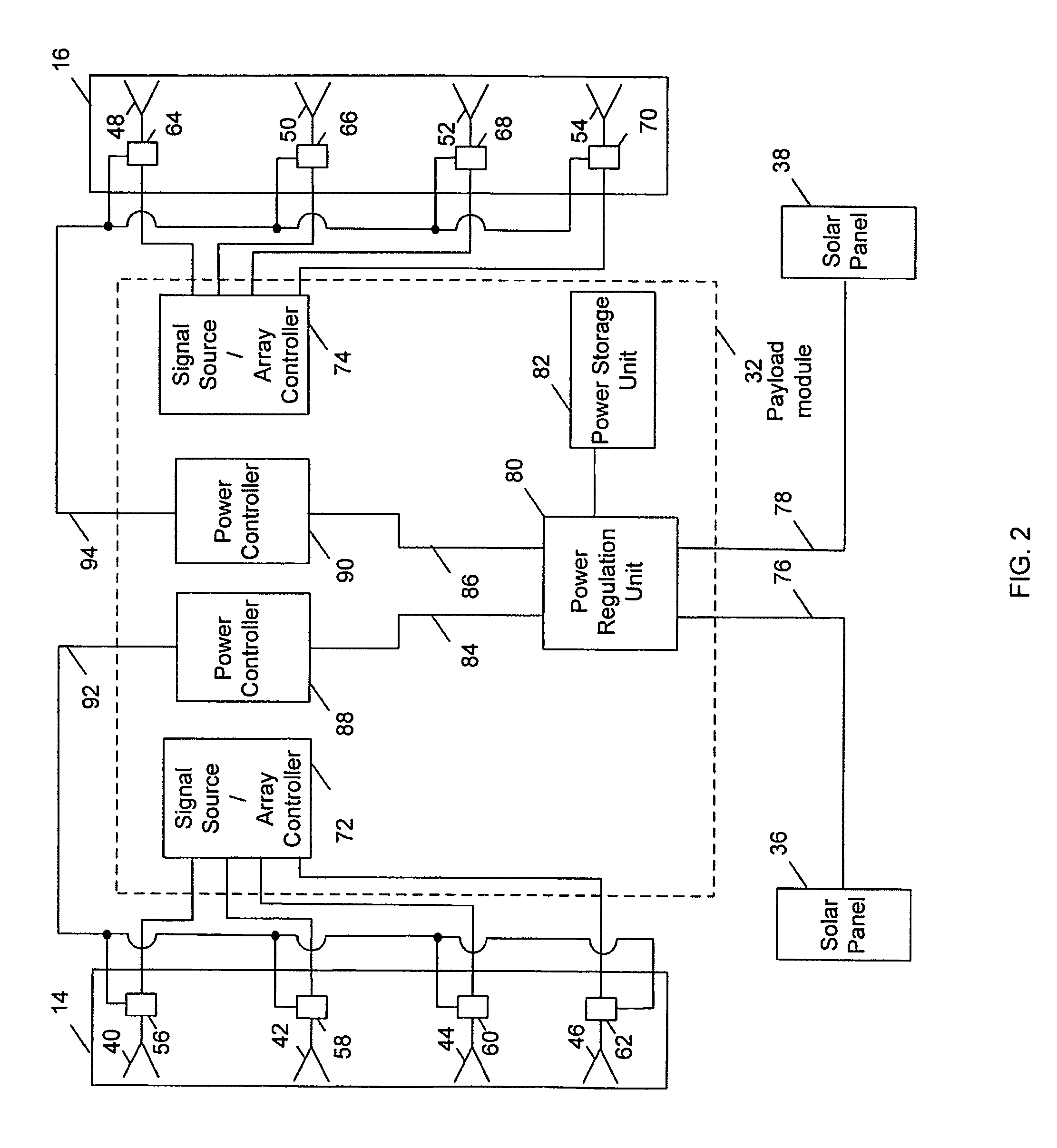Method and system for flexibly distributing power in a phased array antenna system
a phased array antenna and phased array technology, applied in the direction of sustainable buildings, power management, wireless communication, etc., can solve the problems of less controllable beam characteristics such as beamwidth and sidelobe levels, inability to provide appropriate coverage, and waste of power provided to the affected aperture(s). achieve the effect of increasing power allocation efficiency, high efficiency, and reducing the size of satellite power sources
- Summary
- Abstract
- Description
- Claims
- Application Information
AI Technical Summary
Benefits of technology
Problems solved by technology
Method used
Image
Examples
Embodiment Construction
[0015]Referring to FIG. 1, a satellite 10 is shown in a deployed position and includes a phased array antenna system 12 that includes four phased array apertures 14, 16, 18 and 20 that are capable of producing multiple beams. In this representation, phased array apertures 18 and 20 are shown producing four distinct beams 22, 24, 26 and 28. Each of these beams may be used for transmitting or receiving electromagnetic signals to and from locations respectively covered by apertures 18 and 20. For example, beam 22 may be used to receive an electromagnetic signal (e.g., a radio frequency (RF) signal, an optical signal, etc.) that is transmitted from a ground station 30 that is covered by beam 22. To receive the electromagnetic signal on beam 22, phased array aperture 18 (or a portion of the phased array aperture) is designed to operate at one or more frequency bands (e.g., C-band, Ku-band, etc.) within the electromagnetic spectrum in which ground station 30 transmits. Additionally, phase...
PUM
 Login to View More
Login to View More Abstract
Description
Claims
Application Information
 Login to View More
Login to View More - R&D
- Intellectual Property
- Life Sciences
- Materials
- Tech Scout
- Unparalleled Data Quality
- Higher Quality Content
- 60% Fewer Hallucinations
Browse by: Latest US Patents, China's latest patents, Technical Efficacy Thesaurus, Application Domain, Technology Topic, Popular Technical Reports.
© 2025 PatSnap. All rights reserved.Legal|Privacy policy|Modern Slavery Act Transparency Statement|Sitemap|About US| Contact US: help@patsnap.com



